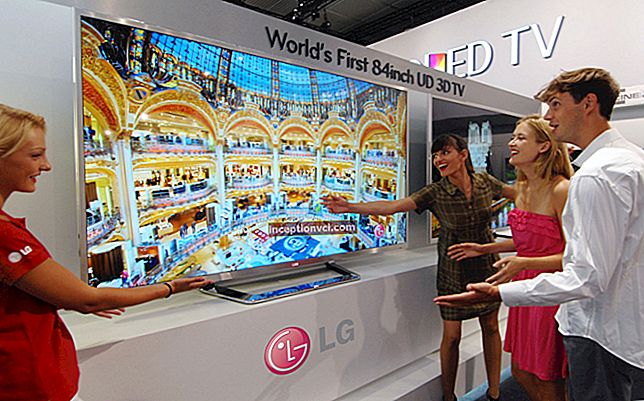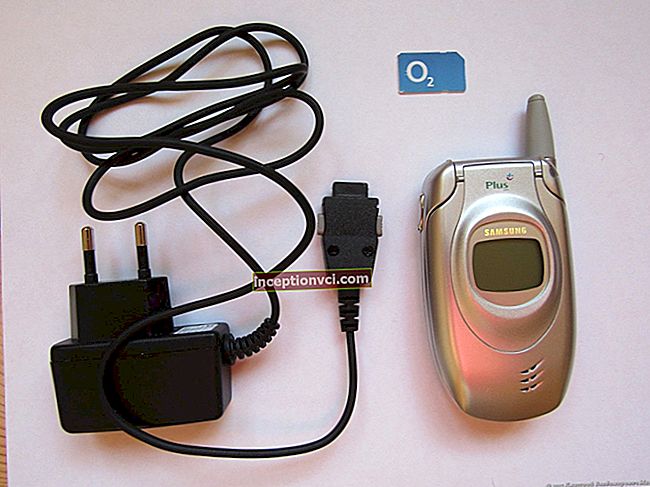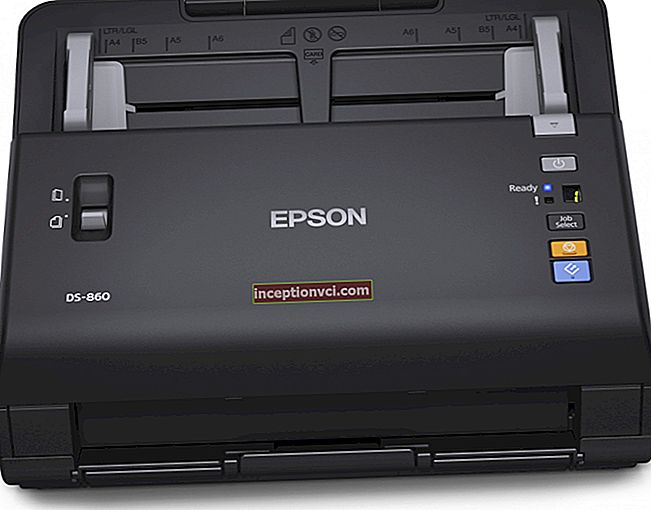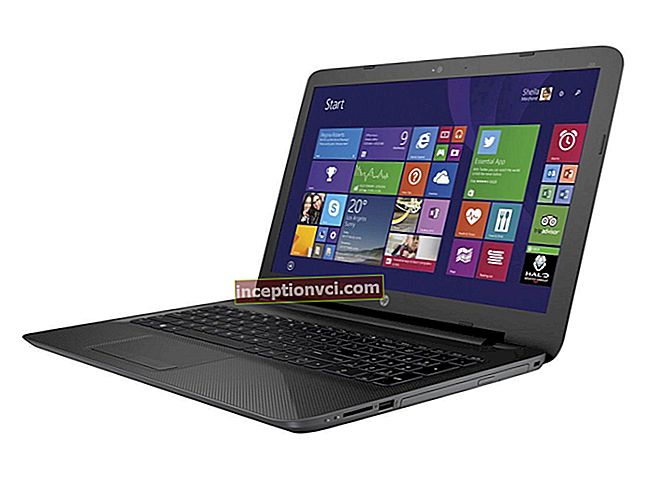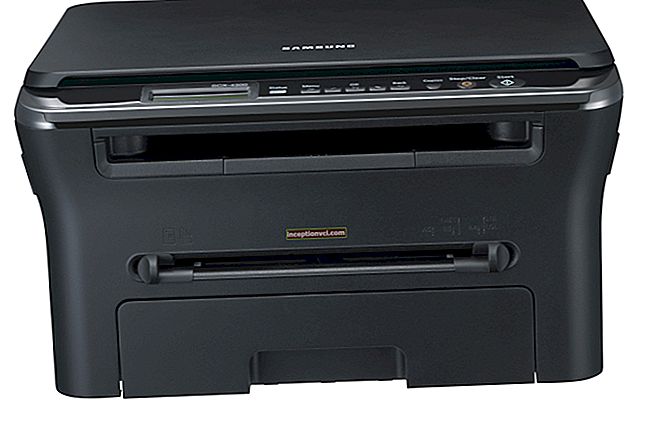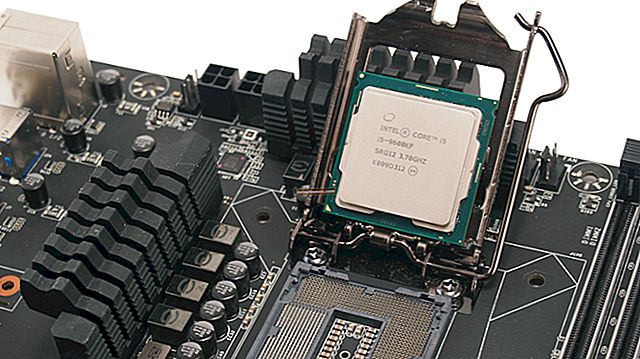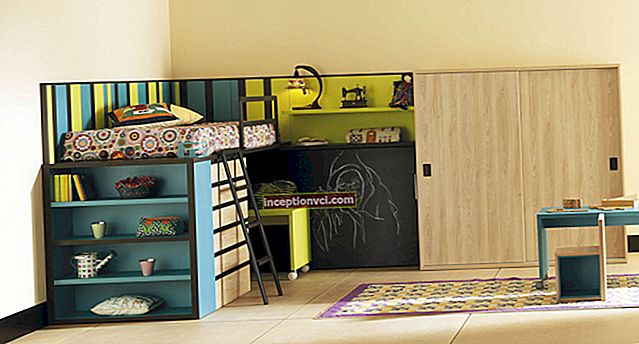- Equipment
- Housing
- Interfaces
- Input Devices
- Keyboard
- Touchpad
- Display
- Performance
- Impact on the environment
- Noise
- Temperature
- Loudspeakers
- Battery
- Verdict
Equipment
The laptop is safely packed in a high-quality dark-colored cardboard box with different pictures and slogans all over the surface. There is a sticker on the side with a detailed description of the device configuration. The package includes:
• laptop (2400 g);
• 6-cell battery (300 g);
• power adapter and network cable (450 g);
• Asus Recovery DVD Windows 7 (64-bit);
• DVD with drivers for Windows 7 (64-bit);
• DVD with Power 2 Go program;
• User's Manual;
• ExpressGate management;
• Quick Installation Guide;
• warranty (warranty period is 2 years);
• a piece of microfiber cloth;
• branded laptop bag;
• wired mouse;
• branded cable tie.
Windows 7 HP (64-bit) is installed on the laptop as a base.
Housing
The dynamic growth in the sale of laptop computers, as well as the desire to limit the means of production, are forcing manufacturers to take actions, including in copying corpuses. The mentioned fishery concerns especially devices belonging to this family of laptops. Not otherwise is in the case of the updated, multimedia "N" series, which bears the logo of the Taiwanese manufacturer, the representative of which is the Asus N61JV.
Externally, the Asus N61JV's style is pretty decent. An interesting design element is the semicircular profiled embossing in the side partitions of the laptop case, which (as it turns out after lifting the lid) adorn the multimedia panel, which is stretched to the entire width of the working platform. The lid is adorned with a lacquered material that changes in shades of cherry in the shine of the sun.
Unlike the N61JQ model, the Asus N61JV does not dispose of a protective matrix shell from the access of contaminants to the panel surface. Lack of additional rigidity adversely affects the rigidity of the screen cover, which presents excessive flexibility.

The LCD panel is attached to the principal unit by means of two small hinges, which present average resistance when the matrix is tilted. The hinges clearly absorb vibrations caused by carrying the laptop or knocking on the keyboard plates. Lifting the cover with one hand causes the platform to toss.
After lifting the lid, the main part of the work stand is shown, which, at the first contact, dazzles with the matte design of the material at the place where the wrists are supported. Unlike the outside of the laptop, which collects fingerprints quickly, this material seems to be good at enduring everyday use.
A media panel is integrated between the top of the keyboard assembly and the hinges, which at the same time acts as a speaker mask. By using the function buttons located on the left side, you can adjust the sound volume and also activate the Express Gate software. On the opposite side of the panel is a beautiful start button, an illuminated bezel, as well as a futuristic design that is thought to be also a knob that serves to adjust the performance of the laptop or manually control fan rotation.
The quality of the materials used, as well as the inflexibility of the laptop case, do not raise much caution. Oppression of the case in the vicinity of the optical drive niche or lifting the platform for one of the corners does not cause deformation of the material. The sides of the laptop are well done.The delicate flexing of the keyboard surface, which is caused by the material being flexible enough to mask the free spaces between the keys, characterizes most designs equipped with this type of solution.





Interfaces
The Asus N61JV disposes of a fairly large number of communication ports, the variety of which should make it possible to connect most of the peripheral devices available on the market. In addition to the digital HDMI connection on board the laptop, we also have market news for the USB 3.0 interface, which offers transfer rates of 90 MB / s and is also backward compatible with USB 2.0 devices.
The placement of the connectors looks ordinary. The placement of the cover, which is attached to the rear wall of the laptop case, makes it impossible for communication interfaces to be deposited in this place, hence all ports are located on the flanks of the laptop case.
The battery in the nest holds up confidently - under the influence of the onslaught, the battery does not swing to the sides. A special recess in the battery case makes it easy to remove the battery from the niche. The presence of a service cover on the bottom of the work platform allows easy access to the internal components of the laptop.

front: card reader, signaling diodes

left: Kensington security slot, VGA, RJ45, HDMI, ExpressCard / 34, USB 3.0, cooling grille

right: 3.5mm headphone and microphone ports, USB, eSATA, USB

back: battery
Input Devices
Keyboard
The Asus N61JV is equipped with a chiclet (island) keyboard, the key plates of which protrude above the level of the material, masking the free spaces between the characters. The glossy material, which fills in the gaps between the plates, is, however, quite flexible, which is why the surface of the device gently bends under the pressure of the palm while using the keyboard.
The plates with a sufficient size (15x15 mm) in combination with the increased gaps between the keys make it much easier to select individual characters, which automatically translates into better working comfort. On the right flank there is a block of numbers, the keys of which are 12x15 mm in size.
The arrangement of the individual plates looks intuitive. The highlight of the Esc key and a set of spare direction arrows in the segment of the block of numbers deserve praise. A certain caveat wakes up the size of the right Alt key, which, at least from my point of view, should be wider. The space key works quite loudly.
Using a combination of three different keys does not lock the keyboard.

keyboard



Touchpad
The touchpad is decoupled in a classic way, which in the case of a Taiwanese laptop manufacturer (looking through the prism of recently tested designs), I would define as an exceptional case.
The 83x53mm touchpad plate assures freedom of finger operation. Relatively correct sliding properties of the surface, as well as its size, however, is not able to mask the delicate problems associated with the loss of the cursor during the dynamic movement of the palm.
A single 83x12mm beam simulates the operation of the buttons on a computer mouse. During longer use of the device, there is an inconvenience associated with the insufficient height of the buttons; hence also for better performance, I advise rather clicking when using the tangent area of the touchpad. Pressing in the outer parts of the beam neutralizes the click that the buttons give out.

touchpad


Display
The 16-inch HannStar screen used in the N61JV has a nominal screen resolution of 1366x768 pixels. The picture aspect ratio of 16: 9 assures that we are dealing with a widescreen display.
The Taiwanese manufacturer's screen looks satisfactory in terms of individual color intensities.The colors give the impression of being natural; dark shades of gray and green are well accentuated, white is correct. Black also looks good, with a depth of 0.7 cd / m².
The reflections that are generated on the glossy surface of the sensor are not as strong as in the case of the N61JQ model. At maximum screen brightness, working with the device in moderate sun is possible, even very possible.

viewing angles
The non-standard attachment of the screen to the principle unit limits the screen opening angle to approximately 140 degrees. When working with a laptop on your lap, this is not a big problem, because the field of viewing angles in the vertical plane is so narrow that further opening of the lid only enhances the inversion of colors.
The field of viewing angles in both planes is not presented higher than the ordinary one, adopted for devices of this type. Getting a relatively correct display of colors requires the sacrifice of a minute to select the appropriate position in front of the monitor. Looking at the screen from the side, it enhances the reflections that are created on the surface of the matrix.

color chart
Performance
The tested Asus N61JV notebook uses the Core i3-350M processor, which is characterized by a base core clock frequency of 2.26 GHz. The dual-core Arrandale supports Hyper-Threading technology, which allows a single execution unit core to serve two independent moves at the same time. The Intel processor is made in a 32 nm manufacturing process and is equipped with 3 MB of L3 cache memory.
The Core i3-350M processors, although attributed to the weakest segment of the new generation of processors, are successfully installed in notebooks, typically multimedia, where they are often compared with separate graphics cards of the middle performance class. Unlike the faster Core i5 / i7 units, the Core i3 series does not support Turbo Boost, which analyzes data such as CPU usage, temperature, and power status to dynamically accelerate the CPU core clock speed.
In the artificial Cinebench R10 xCPU test, the Core i3-350M scores 35%, which is outrageous compared to the quad-core Core i7-720QM mounted in the competitive N61JQ model with an ATI MR HD 5730 graphics card. Compared to the Core i5-520M units, the difference is 14% less side.


The laptop from the Taiwanese manufacturer is equipped with Nvidia Optimus technology, which makes it possible to auto-switch the active graphics core between the integrated Intel HD Graphics and the detached Nvidia GeForce GT 325M graphics card. The innovative technique of "green" presents a completely different approach to the problem of maintaining two graphic structures than those that are still found in available solutions.
Technological improvements have touched the main display lighting process, which since then has been fully implemented exclusively using the IGP style, which automatically eliminates the inconvenience associated with flickering or fading of the screen when adjusting the screen position (a sore of structures equipped with earlier solutions). The discrete mechanism for switching between the installed graphic units is built into Optimus and provokes a symbolic lag of a row of 0.2 cells, which obviously does not affect the quality of the resulting picture.
Importantly, there is also the possibility of manually adjusting the instructions of the responsible core when servicing the Optimus technology. From the panel of the settings level of the standalone graphics card, we get access to the dynamic profile, where with a few clicks we can assign programs to the selected graphics core or also activate a specific graphics core. The activity of this graphics card is signaled by diodes placed in the outer parts of the multimedia panel (white - GT 325M, blue - IGP).Several intense days of testing have confirmed, however, that the Optimus performs well during typical laptop use. In the overwhelming majority of cases, the system correctly matched the graphical structure to a specific program (with the exception of diagnostic programs). Games played through the Steam platform were automatically played on the core of an Nvidia graphics card.
The Seagate ST9320325AS hard drive has an average transfer speed of up to 59 MB / s.
Impact on the environment
Noise
The Asus N61JV presents the right work culture, but only during operations that do not significantly affect the occupancy of the central unit.
When surfing the network or working in a text editor, the cooling system works at its lowest level when the fan makes a rustle, which fluctuates within 34.1 dB. The fan is turned off only when the device remains at rest for a minute.
Short-term CPU loads (performance measurement using the Fritz Chess Benchmark software) cause the rotor to speed up, which generates moderate noise (35.8 dB) on top of the run.
The maximum encumbrance of the laptop components activates the fan, which in the process of overclocking the blades produces a noise that fluctuates around 42.5 dB. The mentioned sound does not last too long, because after a minute the fan stabilizes circulation at 4000 rpm, which automatically translates to noise voltage reduction (39.9 dB).
Temperature
The Asus N61JV does not tend to get too hot. As well as when surfing the net, and when playing longer games using the Nvidia graphics style, the laptop case maintains a satisfactory temperature.
In the warmest part of the work rest, located in the outskirts of the upper side of the touchpad, the material reaches a temperature of 35 ° C. Due to the fact that we are dealing with a laptop equipped with a separate graphics card, and the measurement was carried out after an hour's load of its components, the mentioned result must be considered a good achievement.
The temperatures spread out relatively evenly over the entire working surface, while the higher temperatures in the right fragment of the fundamental unit are caused by the presence of a hard disk in this place.
The lower part of the case, even in spite of the operation of the laptop components, which heat up during operation, maintains a moderate temperature, hence also working with the device on your lap or keeping the laptop on the couch does not cause problems.


Loudspeakers
The speakers placed at the rear of the working platform cover the multimedia panel, which acts as a conditional mask for playing devices. Its surface is covered with miniature holes, which should make it possible for the sound streams to escape from the interior of the laptop case. In addition to the mentioned procedures, the sound that is reproduced gives the impression of being delicately muffled, which translates negatively into the sound of low tones when listening to music.
The gaming devices look completely correct in relation to the maximum volume, which, in combination with expressive vocals, allows comfortable viewing of films in a large company.
Battery
The Asus N61JV is equipped with a 6-cell battery with a factory capacity of 48 Wh. Although it can be called standard, thanks to the presence of Nvidia Optimus technology, the laptop gets completely correct performance on battery power.
Activating the detached graphics mode reduces the battery performance by an average of 15-17% (depending on the load, as well as the settings of the system environment).
Activating the detached graphics mode reduces the battery performance by an average of 15-17% (depending on the load, as well as the settings of the system environment).




Verdict
The Asus N61JV is the right design that, thanks to innovative solutions in the way it uses Nvidia Optimus technology, and the presence of a USB 3.0 connection, has a chance to gain a foothold in the segment of home laptops dedicated to entertainment, which is growing abundantly.
Among the advantages of a laptop, I will also credit the impeccable inflexibility of the working platform, as well as the comfortable keyboard, which, in addition to delicate flexibility, does its job well. The matt design of the work desk does not seem to have a positive effect on the visual experience, but it does guarantee an improvement in the equipment's merit.
Compared directly to the N61JQ model (Core i7-720QM, ATI MR HD 5730), the multimedia Asus N61JV looks pale in relation to the processing power it receives. There is no doubt, however, that the possibility of using the integrated graphics module, as well as the use of the processor with lower operating temperatures, contributed to a decrease in the temperature of the case, as well as a slightly better culture of the cooling system of the model equipped with a separate Nvidia graphics system.
The final rating given to the device by the Taiwanese manufacturer is reduced by the relatively loud cooling system, which, during operations that aggravate the components of the laptop, emits a super-discharge dose of noise. The periodic beeping of the coils from the processor's power supply, which manifests itself during operation on a battery, is a flaw that a potential buyer has to simply get used to.
 Asus N61JV
Asus N61JV
